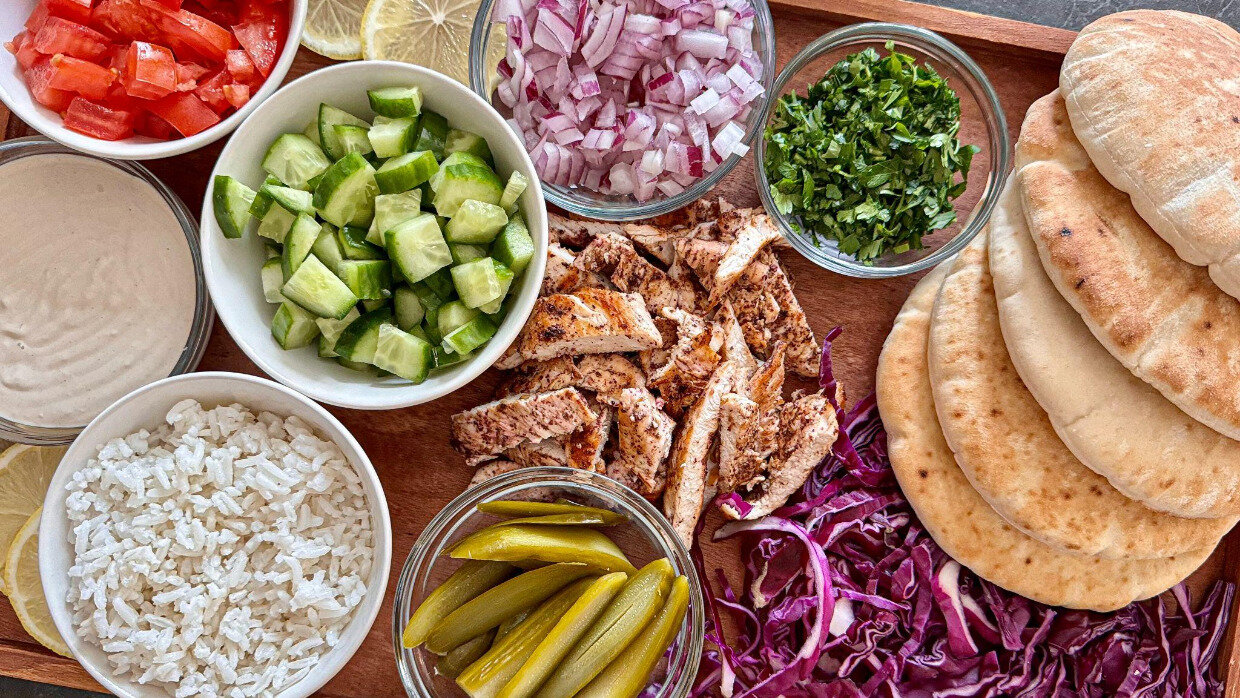It’s Passover night and Aunt Bertha reaches across your plate to grab hold of an unkempt chunk of horseradish prominently displayed on the seder plate in front of you. As she demonstratively raises up the pungent root (as the ritual of the seder demands), flecks of dirt flaking off in your direction, you ask yourself the question: “what does this have to do with Passover and why do I have to eat it?!”
And that reaction is precisely the point…to prompt us to ask real questions about arguably the most definitive moment in Jewish History and how it relates to us. The Seder, and more specifically the Seder Plate, serves as a visual and edible prop in the telling of that story. Each element on the table has great potential to create sensory memories and inspire awesome conversations.
Why’s it on the Seder Plate?
Karpas:
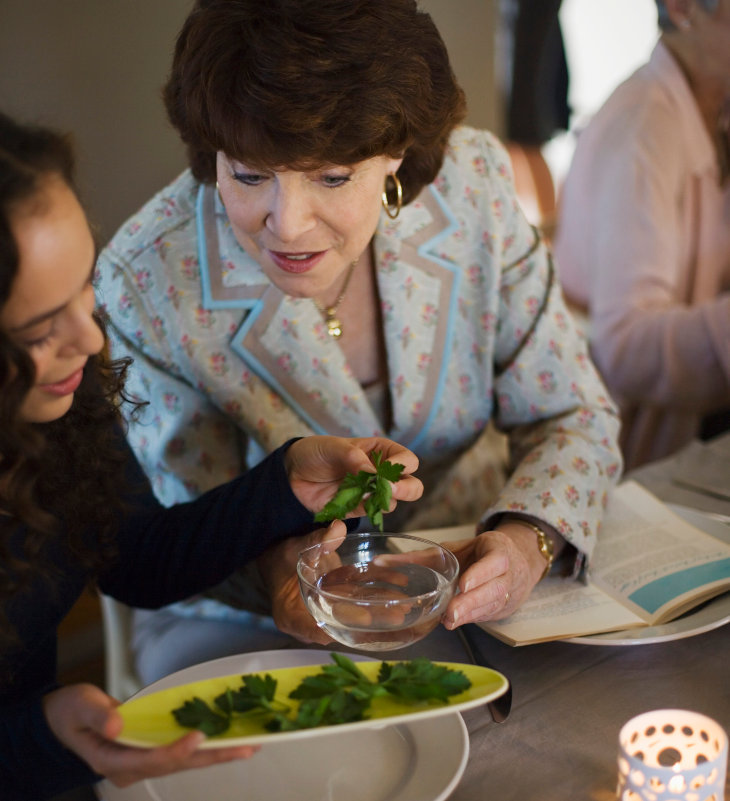
Traditionally parsley but could be any vegetable. Consider it an opening invitation in the evening of edible questions as this is the first food we put in our mouths. The Karpas is green, which reminds us of spring, the season of renewal, when the Exodus took place. We take a minimal amount to whet our palates, but first dip it in salt water, which reminds us of the salty tears of slavery. To get to spring, we need to first experience the preceding winter.
Charoset:
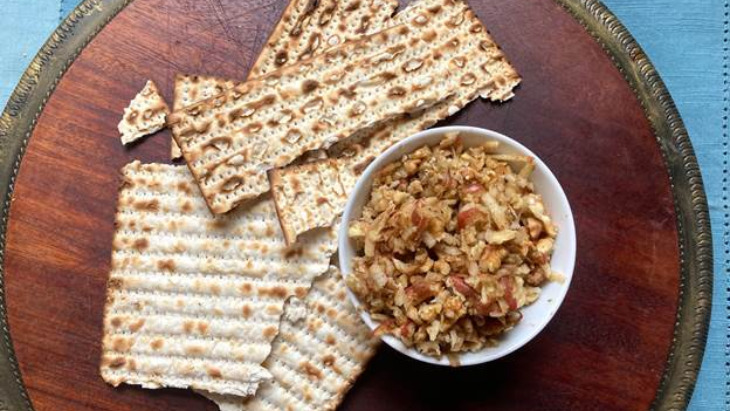
What is that sweet, pasty stuff, you ask? The texture of this cinnamon spiced dip resembles the mortar used by our forefathers when they were slaves in Egypt. Walnuts and apples are ground together and mixed with wine to create a mortar-like consistency. And while it happens to be delish loaded onto matzah, we actually use the sweetness to temper the bitterness of the Maror (by dipping and shaking off).
Maror:
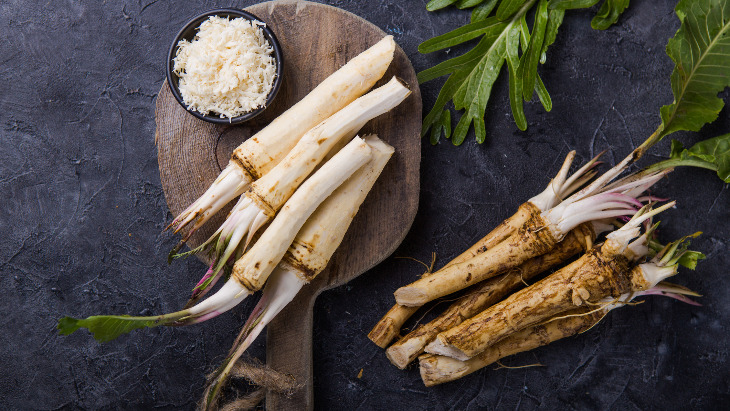
A bitter herb, meant to remind us of the bitterness of slavery. In my family, our tradition was to use freshly grated horseradish for the bitter herb. My father used to have so much that the tears would stream down his face and as his cheeks turned beet red. He would smile and say “oy, that’s so good.” I never understood how he could enjoy that suffering. Really, it was experiential for him. At the Seder, we role play and put ourselves even just for a moment into our ancestors’ shoes. And then once we do, that taste lingers from one year ‘till the next, connecting us back through the generations. When he tasted maror, he relived every Passover he could remember with family and felt joyfully connected. That…and he loved spicy food.
Chazeret:
Another type of bitter herb, most commonly romaine lettuce. The Talmud discusses many forms of bitter herbs that can be used at the Seder. We Jews love to debate and having a second kind on the table satisfies all opinions. In similar fashion, all the back and forth “debates” between rabbis mentioned in the Haggadah – they are not arbitrary arguments but rather there to help spur us into discussions to come to a better understanding.
Beitzah: a roasted egg.
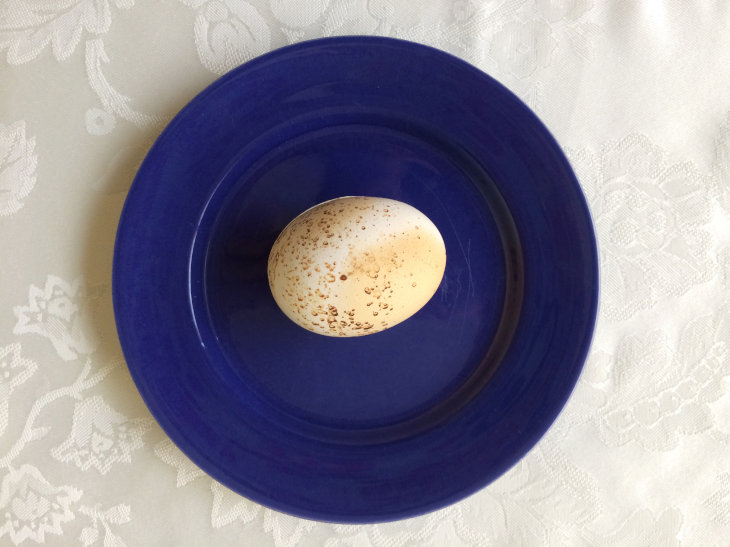
Way back during Temple times (about 2000 years ago), there were many types of offerings that were brought in observance of Passover. The egg symbolizes the offering we brought on every holiday. In my family, we serve hard boiled eggs at the start of the meal to drive this one home.
Z’roa: the roasted shank bone.
One of the three main symbolic foods of the Seder (it gets its own paragraph in the Haggadah along with Matzah and Maror), the shank bone is also representative of an offering which we are no longer able to bring without the existence of the Holy Temple – namely the Pascal sacrifice. Each year following the Exodus from Egypt, Passover was marked by the roasting of a lamb which was then eaten by each household. In this way, we recalled that night when God passed over the houses of the Jews in Egypt while He killed the first born in all the Egyptian homes. That night Jews marked their doors and lintels with the blood of a lamb (a pretty risky move since the lamb was considered an Egyptian deity) and remained safely inside. Nowadays, we use a roasted bone instead.
Matzah: the bread of affliction or the bread of freedom? Well, both actually. We were in such a hurry to leave Egypt that we had no time to bake bread – flat breads had to suffice on our way out of slavery. Judaism’s favorite cracker reminds us that time, which is needed to ferment and bake bread, is the secret ingredient to living a free life. How do we spend our time? Are we in control or enslaved?
What is a “Hillel Sandwich” anyway? After we complete sampling the maror and matzah, there is one thing left to do before getting to our matzah ball soup… the mysterious Hillel Sandwich called Korech. Hillel lived during Temple times and his practice was to eat the matzah, maror and Pascal sacrifice all together at once…which sounds pretty good to me. Lamb shwarma wrap anyone? On a deeper level, Hillel was teaching an invaluable lesson: we can enjoy the liberties of freedom (matzah), but only when we join it together with our collective experiences of slavery (maror) can we develop gratitude for the blessings and miracles in our lives; to get to here, we needed to come from there. By reflecting and remembering, we develop a sensitivity and empathy towards others less fortunate, and that is a lesson we all need to hold on to. So now the seder comes full circle…and it’s time for the brisket. We certainly worked up an appetite!
This Pesach, try to tap into the tastes of the Seder in a mindful way. Ask sincere questions and look for ways of passing these old traditions into the next generation in a relevant way. An updated redux of gefilte fish, try this recipe for Herbed Fish Cakes with Lemon-Horseradish Sauce from my new book, The Giving Table.








